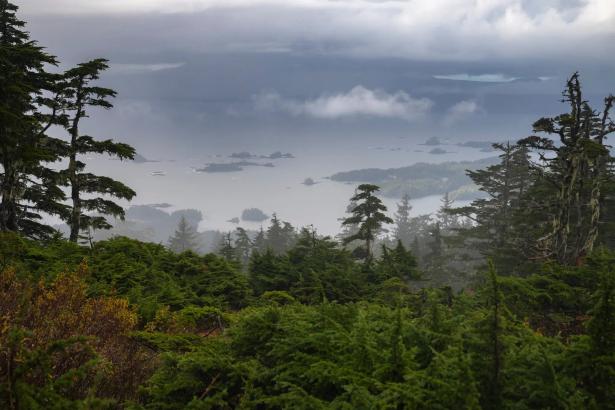The Trump administration said on Monday that it would open up 58 million acres of back country in national forests to road construction and development, removing protections that had been in place for a quarter century.
Agriculture Secretary Brooke Rollins announced plans to repeal the 2001 “roadless rule” that had preserved the wild nature of nearly a third of the land in national forests in the United States. Ms. Rollins said the regulation was outdated.
“Once again, President Trump is removing absurd obstacles to common-sense management of our natural resources by rescinding the overly restrictive roadless rule,” Ms. Rollins said in a statement. She said the repeal “opens a new era of consistency and sustainability for our nation’s forests.”
Environmental groups said the plan could destroy some of America’s untouched landscapes and promised to challenge it in court.
The unspoiled land in question includes Tongass National Forest in Alaska, North America’s largest temperate rainforest; Reddish Knob in the Shenandoah Mountains, one of the highest points in Virginia; and millions of acres of the Frank Church-River of No Return Wilderness in Idaho.
“Most Americans value these pristine backcountry areas for their sense of wildness, for the clean water they provide, for the fishing and hunting and wildlife habitat,” said Chris Wood, the chief executive of Trout Unlimited, an environmental group.
When President Bill Clinton used executive authority to protect the forests weeks before leaving office in 2001, it was hailed by conservationists as the most significant step since President Theodore Roosevelt laid the foundation for the national forest system. It blocked logging, road building and mining and drilling on 58 million acres of the remaining undeveloped national forest lands.
Mr. Wood, who served as a senior policy adviser to the chief of the U.S. Forest Service when the rule was developed, recalled that it had wide public support.
“I don’t think the timber industry wants to get into these areas,” he said. “They’re wildly controversial, and they’re too expensive to access. I believe when they take this to rule making, they will realize how wildly unpopular getting rid of that rule is and how little gain there is to be had from it.”
Randy Spivak, public lands policy director at the Center for Biological Diversity, an environmental group, said eliminating protections would invite wildfires and put drinking water at risk.
“The Trump administration’s disdain for nature knows no bounds,” Ms. Spivak said. “The roadless rule is one of our country’s most important conservation achievements, and we’ll fight like hell to keep these protections in place.”

Agriculture Secretary Brooke Rollins announced plans to repeal the 2001 “roadless rule” that had preserved the wild nature of nearly a third of national forests in the United States.Credit...Eric Lee/The New York Times
The announcement comes as the Trump administration is moving to significantly increase logging in the United States. President Trump has called on cabinet secretaries to bypass endangered species laws and other environmental protections in order to boost the domestic supply of timber.
Ray White of Harold White Lumber and Millworks in Kentucky said he was glad to see an end to restrictions on the land and an opportunity to gain access to new timber. “We’re very pleased to see a little common sense being brought back,” Mr. White said. “It certainly does give the opportunity now to get to a large part of these forests.”
On Capitol Hill, Republican lawmakers are currently writing a plan to sell off federal lands as part of their domestic policy and tax package. The effort has drawn an intense backlash from Democrats, environmental activists and some Republicans.
Republican lawmakers from Western states praised the plan to eliminate the roadless rule.
Representative Nick Begich, Republican of Alaska, called the Trump administration decision “yet another a major victory" for the state and said the regulation had “blocked access to critical resources, and halted economic opportunity, particularly in Alaska, where 92 percent of the Tongass National Forest was off-limits.”
Tongass National Forest has for decades been the center of the fight over the roadless rule. Its cedar, hemlock and Sitka spruce trees, many of them more than 800 years old, provide essential habitats for 400 species of wildlife, including bald eagles, salmon and the world’s greatest concentration of black bears.
The towering trees also play an essential role in fighting climate change. They store more than 10 percent of the carbon accumulated by all national forests in the United States, according to the government.
In 2020, the first Trump administration stripped roadless protections specifically in the Tongass National Forest and opened about nine million acres to logging. In 2023, the Biden administration restored the restrictions.
The U.S. Forest Service, a division of the Agriculture Department, said in a statement that it would issue a formal notice of the rollback in the coming weeks.
Lisa Friedman is a reporter covering climate policy and politics at The New York Times.


Spread the word